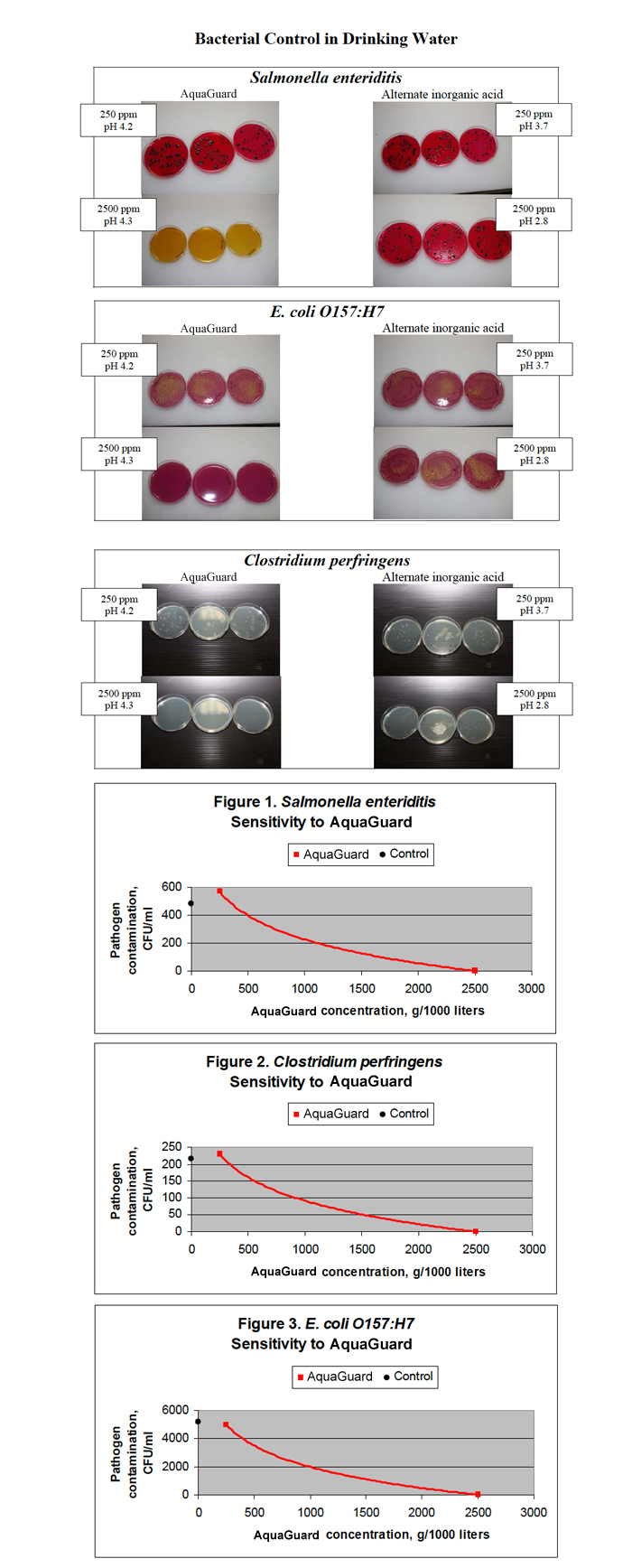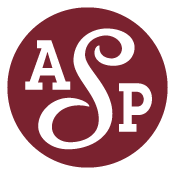AquaGuard, a liquid complex of food-approved antimicrobial agents, is wel recognized for reducing pathogen contamination in nutritional products, thereby increasing food sanitation, supporting animal health and guarding human food safety. Increasing public and regulatory focus on Salmonella enteriditis, E. coli O157:H7 and other bacterial contaminants has customers asking how to use AquaGuard to purify livestock drinking water supplies. The research in this summary measured the amount of AquaGuard required to completely eliminate three highly-pathogenic bacterial isolates from an aqueous solution. AquaGuard was able to fully eliminate the bacterial contaminants when added to solutions at very practical concentrations, which were approximately 10 times less than an alternative mineral acid.
Purpose: To evaluate the antimicrobial effectiveness of AquaGuard used as an antibacterial drinking water treatment against three prevalent pathogens (Salmonella enteriditis, Clostridium perfringens, and E. coli O157:H7).
Method: Highly pathogenic bacterial strains were grown either in tripticase soy broth (Salmonella and E. coli) or fluid thioglycolate broth (Clostridium). The cultures were diluted in peptone water and inoculated on plates to count the number of living colonies remaining in increasing concentrations of AquaGuard. All dilutions and plate counts were performed in triplicate.
Results: AquaGuard’s very potent antimicrobial activity is not based on reducing pH alone, and other studies confirm it is a much stronger antimicrobial sanitizer than ordinary food-approved inorganic acids that have lower pH. The amount of AquaGuard required to kill 50% of the pathogens (minimum inhibitory concentration, MIC50) ranged 750-850 ml per 1000 liters of solution. Further purifying the solution by killing 100% of the pathogens (MIC100) required no more than 2500 ml/1000 liters for all of the pathogens tested (see table).

The accompanying photos of lab culture plates clearly show that 2500 ml of AquaGuard per 1000 liters of drinking water completely killed all three pathogens. The graphs in figures 1-3 detail each of the pathogens’ sensitivity to AquaGuard, which were very similar for all 3 bacterial contaminants.

Conclusions: Each of the bacterial contaminants was sensitive to AquaGuard, with 100% control of all highly pathogenic bacterial isolates used in this study requiring no more than 2500 ml of AquaGuard per 1000 liters of solution. AquaGuard’s potent antimicrobial effect offers food-producing livestock growers a convenient, practical and cost-effective means to reduce bacterial drinking water contamination, support animal health and guard human food safety.

